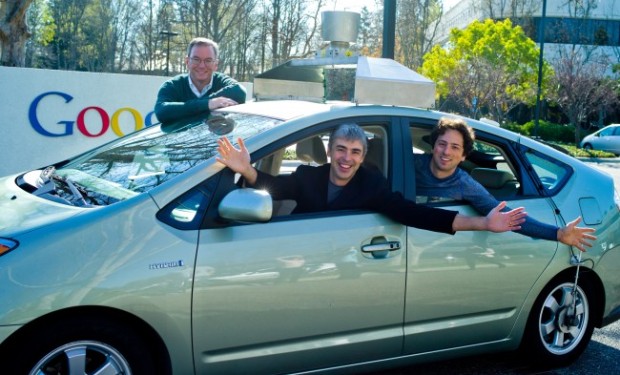Rules of the road: Getting the green light for autonomous vehicles
While several states have enacted legislation authorizing the use of autonomous vehicles, legal scholars suggest that new laws might not be necessary and the federal government warns that such laws might be rushed.
Futuristic cars like those depicted in The Jetsons or Minority Report may not be as far off as they seem. Well, perhaps the flying aspect is a bit unrealistic, but “autonomous” or “self-driving” vehicles are expected to hit the road in meaningful numbers as early as 2020. Several states, anticipating their release and attempting to foster companies’ innovation, have already enacted legislation permitting operation of self-driving vehicles under certain circumstances.
While certain cars already embrace individual features—such as automatic braking and parallel parking, as well as detection of other vehicles driving in blind spots prior to lane changes—very few operate predominantly by computer. However, some self-driving vehicle manufacturers, like Google, have their sights set on fully autonomous vehicles. These cars will—and in some states, already do—use computers and sensors to operate independently, with the human driver having the ability to override autopilot mode if necessary.
Self-driving cars will create safer roads, spur economic development, provide transportation to those who were not previously able to drive themselves, and curb traffic.
Proponents of automated driving, including Google co-founder Sergey Brin, contend that the cars will “dramatically improve the quality of life for everyone.” Self-driving cars will create safer roads, spur economic development, provide transportation to those who were not previously able to drive themselves, and curb traffic.
Just imagine a commuter in a major city being dropped off at a metro stop with her car turning right back around until pickup time after work. More importantly, think of how much safer the driving experience will be when drivers who would have been chatting or texting on their smartphones—or, on another extreme, drinking before driving— have a device completely committed to and manufactured for safe transportation.
How should legislatures proceed in crafting statutes that give room for innovation and incentivize economic growth yet still ensure the safety of the state’s citizens?
But with fast-paced technology comes substantial responsibility. And questions concerning liability and legality abound. In the event of an accident, it is unclear whether the car owner, human “driver” or vehicle manufacturer would be responsible.
Skeptics of the technology, like president of the Insurance Information Institute Group Robert Hardwig, suggest that the vehicles will cause more problems than they are worth: “Right behind the first autonomous vehicle is the first autonomous vehicle ambulance chaser. They will be there faster than you can imagine looking for any sort of accident that might be attributable to a deep pocket.”
One must also wonder how legislatures should proceed in crafting statutes that give room for innovation and incentivize economic growth yet still ensure the safety of the state’s citizens.
Three states, along with the District of Columbia, have passed legislation expressly permitting autonomous vehicles access to public roads within their respective states: Nevada, California, and Florida. Nevada led the way, enacting the country’s first state legislation authorizing the use of autonomous vehicles in June of 2011. At least nine other states are currently considering autonomous driving bills.
The right to drive automated vehicles most likely comports with most state’s licensing statutes even without specific legislation addressing automated driving.
Legal scholars are quick to point out, however, that self-driving cars are not necessarily illegal in the other forty-seven states. Bryant Walker Smith, a resident fellow at the Center for Internet and Society at Stanford Law School who focuses on autonomous driving, conducted research revealing that no law “categorically prohibits” automated driving. According to Smith, “Even without specific legislation, automated vehicles are probably legal in the United States.”
Smith argues that Nevada, California, and Florida’s statutes did not actually legalize automated driving but rather merely regulate the technology. In other words, Smith promulgates the idea that the right to drive such vehicles comports with most state’s licensing statutes even without specific legislation addressing automated driving. For example, New York is the only state in the United States that expressly requires at least one hand on the steering wheel while driving. Most states simply require a licensed person who acts prudently and some states further require that the person be present.
Whether new laws are required or not, it is certainly important for states to balance the economic benefits along with safety concerns.
Although some praise the three states that have enacted legislation for their proactivity in a fast-paced technological environment, others voice concerns over seemingly rushed passage of the bills, suggesting that more testing needs to be conducted before states “jump the gun.” Most significantly, the U.S. Department of Transportation’s National Highway Traffic Safety Administration (NHTSA) released a report in May 2013 detailing its recommendations for state autonomous car laws and urging states to conduct testing prior to the adoption of laws.
“We’re encouraged by the new automated vehicle technologies being developed and implemented today, but want to ensure that motor vehicle safety is considered in the development of these advances,” said NHTSA Administrator David Strickland. “As additional states consider similar legislation, our recommendations provide lawmakers with the tools they need to encourage the safe development and implementation of automated vehicle technology.”
Whether new laws are required or not, it is certainly important for states to balance the economic benefits along with safety concerns. Over time, one would hope that manufacturers have the opportunity to craft mass-produced vehicles that mitigate, rather than augment, human error.





